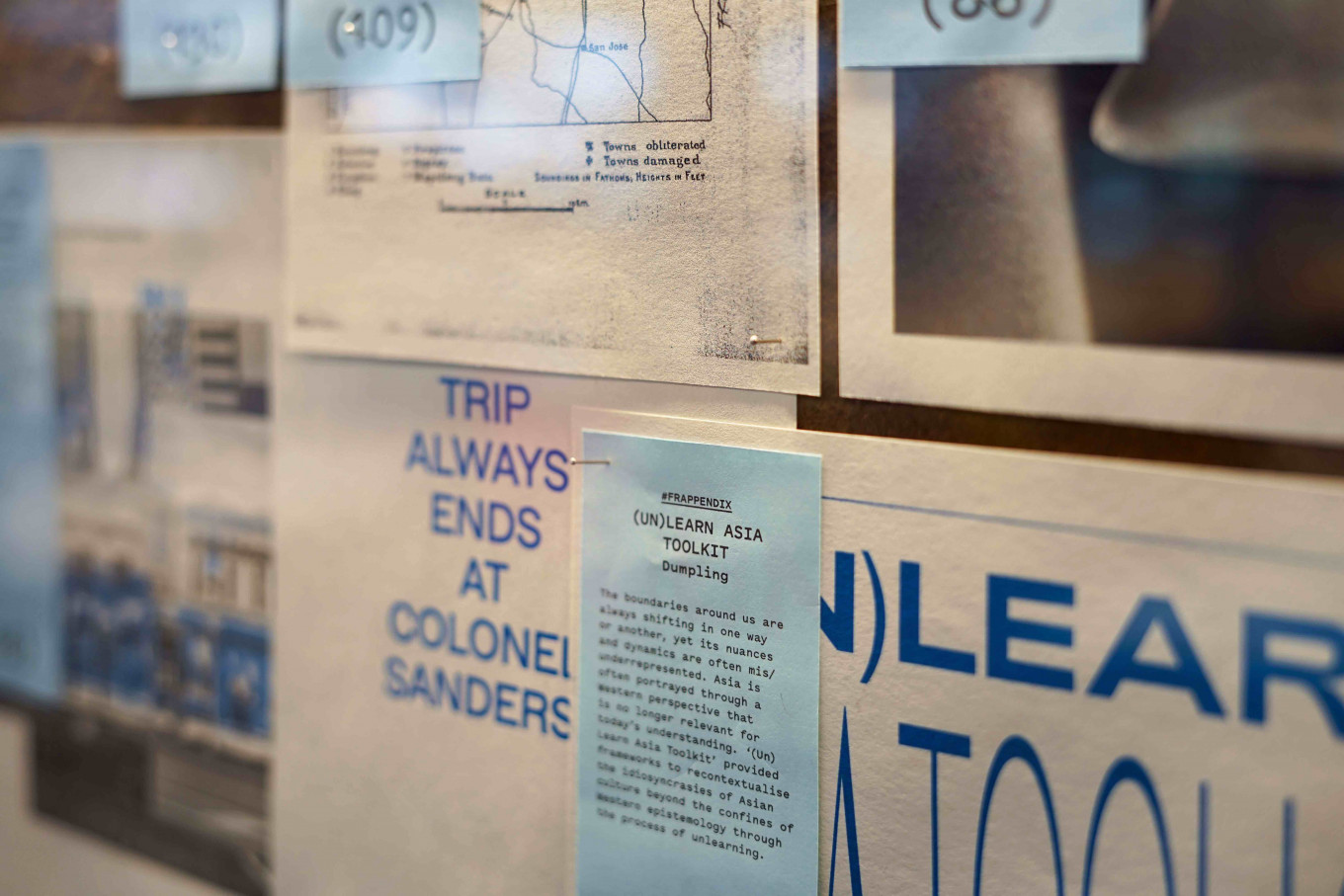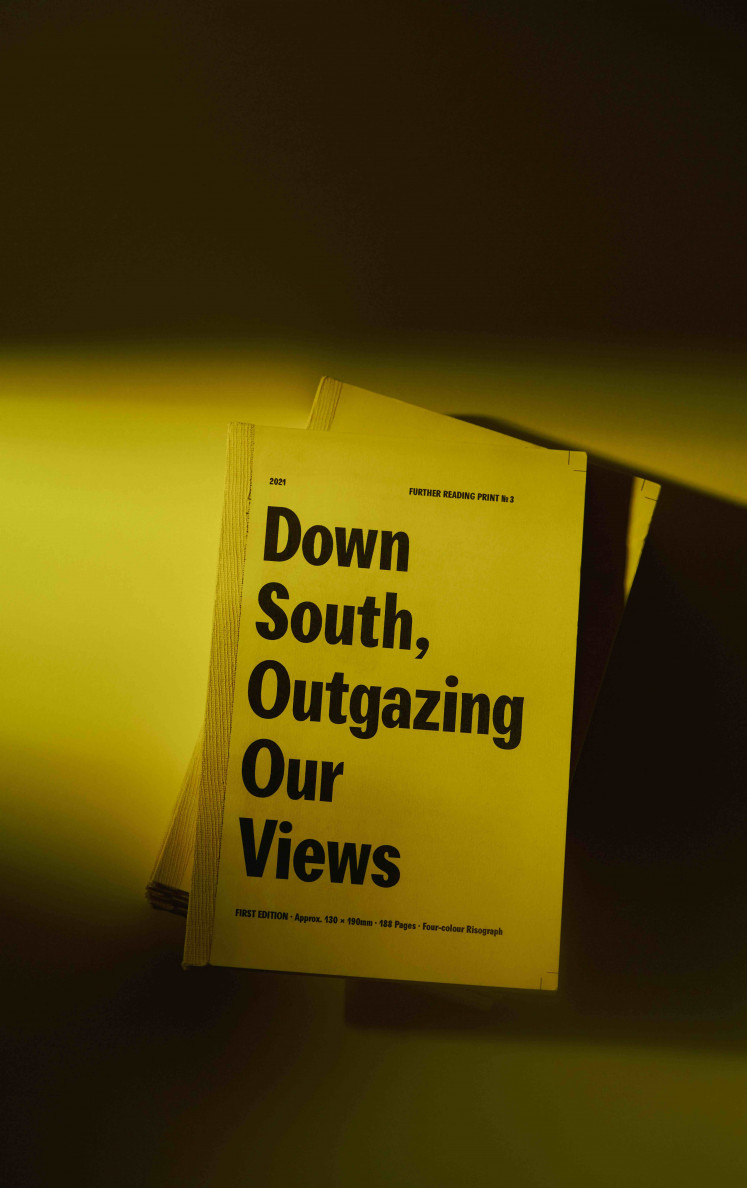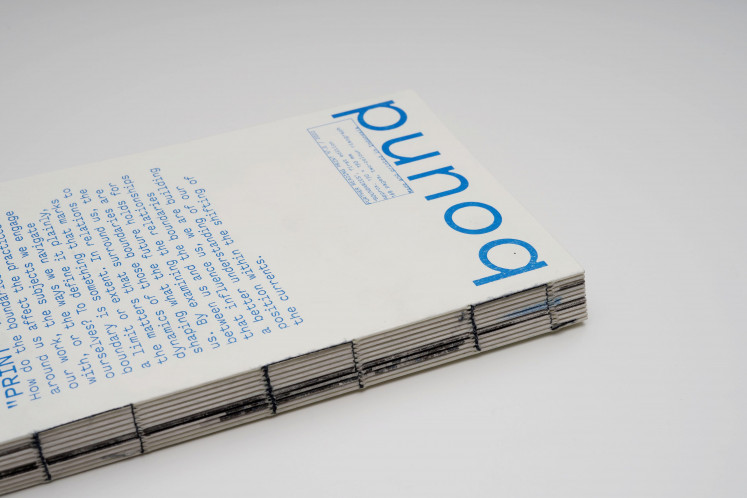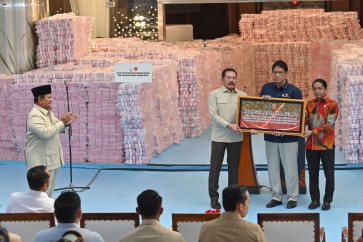Popular Reads
Top Results
Can't find what you're looking for?
View all search resultsPopular Reads
Top Results
Can't find what you're looking for?
View all search resultsPublisher Further Reading showcases the resilience of Indonesia’s designers
Bandung-based multifarious publishing-platform Further Reading talks about its early online days, owning its Risograph-printing mishaps and also its plans for the future.
Change text size
Gift Premium Articles
to Anyone
B
andung-based multifarious publishing-platform Further Reading talks about its early-online days, owning its Risograph-printing mishaps and also its plans for the future.
Pinning down what Further Reading is as an entity can take time and effort. While it gives off the air of a constraining, small-scale operation, Further Reading is an all-encompassing entity with a strongly independent mindset.
The publishing house started as a small online initiative putting out a series of references in the design field for budding designers to read through (hence the name). Further Reading expanded into the world of printed matter, organically forming a namesake-publishing arm.
Now on its third printed issue and a new series, Serving Suggestion, the self-described “independent multi-format publishing platform” is slowly becoming a household name among Indonesia’s design crowd. It plans an ambitious year ahead after participating in New York, the United States, and Tokyo art-book fairs this year.
Reading between the lines
“The objective was, initially, for designers. So that they would read,” said Further Reading’s founder Januar Rianto, speaking to The Jakarta Post on Nov. 19. “A lot of my designer friends, when they were taught theories back in school -- most of the time they were told to memorize and not to look for the substance of what it was that they were reading. They’d get confused when test day came, and the questions differed from what they had memorized. [...] I mean, design is not a memorized subject.”
Januar noted that Further Reading was only pulling already-existing articles and materials referenced in its Instagram account under four themes, which are “Bookmark”, “Bookshelf”, “Profile” and “Select”.
“All of [the visual contents were] produced by the interns and me,” Januar noted. “Just reading references; but we added illustrations. Like this, for example,” he continued, showing an illustration on his phone of a woman that was done in brilliant pink, a color code that he used for “Bookmark”.
At one point, Januar started getting inquiries regarding whether or not Further Reading had any original articles or texts in store, which left him wondering, after tabling the issue with his team, if Further Reading was able to write its texts and contents.
The team consisted of an account executive with a background as a writer and a graphic designer who Januar interviewed for three hours (the interview dug deep into the designer’s research book), then started compiling the concept of its debut-print issue together.
Further Reading published its first print issue, aptly titled Further Reading Print No. 1 / Further Reading Print Issue One, in 2019.
The print issue was done using a printing technique called Risograph. It featured an open-spine binding reminiscent of a Coptic sewn-binding process, resulting in an intriguing visual presentation.
Full-on independence: The third issue of Further Reading Print edition is printed with a lot of effort and fully independent as it shifts the production in-house after Januar acquires a Risograph machine in Bandung. ( Courtesy of Laurentius Wisnu) ( Courtesy of Laurentius Wisnu/.)Tinkering with Risograph
Within the same year, Further Reading also participated in the Singapore Art Book Fair, where the committee initially said no. “But the committee came back to us, noting that they found another publisher that only had one title and asked whether or not we’d be willing to share a table,” reminisced Januar.
After returning from London, the team only had three months to prepare for Singapore. “But the response was perfect. We sold around 80 copies of our book.” Feeling that the readership of the first print issue existed, Januar decided to continue his endeavor.
Further Reading’s second also used the Risograph method.
When asked how Rianto gravitated towards Risograph printing, he answered: “It’s more toward the idea of ‘print vs. digital’ -- what type of printing technique possesses a quality that cannot be replicated by digital printing, in terms of its haptic quality or tactility.”
While Further Reading’s third issue was printed independently with its own Risograph machine, its first and second issue was outsourced from Bandung, West Java, based designer and artist Irfan Hendrian.
The outsourcing of the printing job was quite a problem at times in terms of logistics and a longer chain of communication. “Once, we were about to hold a book launch on Saturday, but they sent the books on Friday evening,” Januar laughed.
The desire to explore and take more control of the printed output then inspired Januar to acquire a Risograph machine of his own through a dealer he inadvertently ran into when driving at Jl Sumatera, Bandung.
Their first attempt at printing took them three whole weeks.
“If we’re doing things like this, it could even take months,” Januar said, repeating what he had said to his colleague back then. He noted that they are much more efficient in using the machine. “The last run only took two and a half days.”
As a technology founded in the 1940s, printing with Risograph machines is arduous. One would need to experiment with paper configurations trial-and-error, ultimately instilling a personal preference in each user.
All in the spine: The second issue of Further Reading Print edition features an open spine with exposed stitch binding similar to a Coptic bind where the pages can be laid flat regardless of the page order. (Courtesy Further Reading Press Archive) (Courtesy Further Reading Press Archive/.)The third and beyond
As Januar's preferred paper, Munken, is a product of Sweden and is only in stock in Jakarta, he spared the time to pick up the papers directly from the distributor’s warehouse in North Jakarta due to the production deadline.
“I didn’t expect it to be that much,” Januar laughed. There were 16 packs of paper, each containing 500 sheets, painstakingly fitted into Januar's city car. “I took all 16 packs and drove slowly through the elevated toll road,” said Januar. The toll road is quite notorious for rough transitions of its sections. “I was terrified that the shock breakers would give out.”
The process for Further Reading’s third print issue took a lot of effort from the team. After Januar managed to drive the paper stock to Bandung, he delivered the printed materials to the binding vendor in Jakarta, where the vendor, due to their then-full capacity, forgot about the order and only noticed a month after.
“Then they said they had no one to collate the pages, so we took it back to Bandung and arranged the pages. The whole house was covered in books,” said Januar. “Then we delivered the collated prints again to the binders. In Jakarta.”
Similar mishaps also happened during the production of Further Reading’s latest series of publications, Serving Suggestion, where the operator misprinted a run of 1,000 sheets of paper. “At least now he’s good at operating them,” joked Januar.
Januar said there are future projects, including the publication of Further Reading Print No. 4.
“It’s supposed to be annual, but we already missed 2022, so hopefully, next year. Serving Suggestion is set to be a biannual publication, so maybe in the next two to three years.”
Several collaborative projects are also being planned, such as FR Zine Series, which hosts collaboration with artists and other creative minds. “We collaborated with Fries n Sauce and Godmatter, now in progress with galleries and street artists in Bandung, and SEA Type Design zine,” said Januar.
Januar noted that Further Reading will expand its horizon by reaching out to disciplines outside of design, “which will include, but not be limited to, music and literature, among others,” Januar closed.
Further Reading participated at Focal Point, an Art Book Fair in Sharjah, UAE, on Nov. 25-27 and will join Kuala Lumpur Art Book Fair, Malaysia, on Dec. 2-4.












